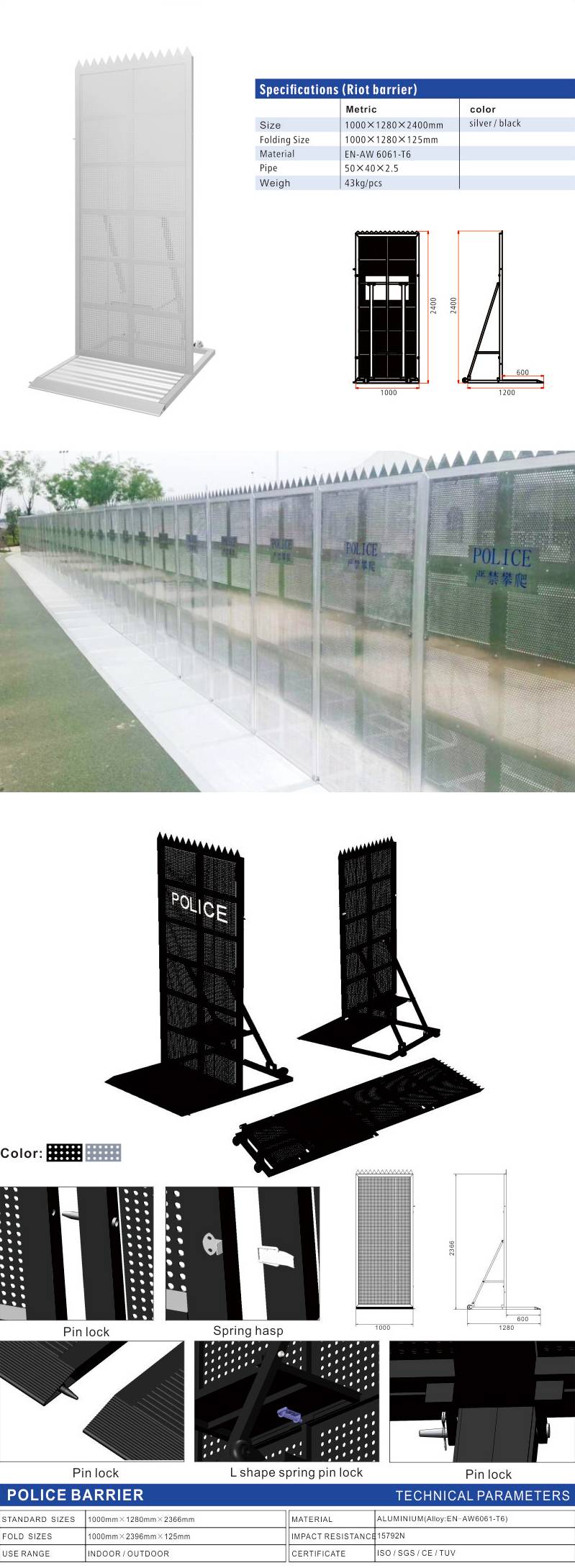What Are You Looking For?
the aluminum event pedestrian 2-meter crowd control crash barrier system presents a comprehensive solution for managing pedestrian flow and ensuring safety in a wide variety of settings. Its modular design, lightweight yet robust construction, ease of handling, and cost-effectiveness make it a versatile and practical choice for event organizers, facility managers, and public safety officials. Continued innovation in design and materials promises further improvements in safety, durability, and aesthetics, solidifying its position as a crucial component of modern crowd control infrastructure.
The core of this system lies in its modular design, typically consisting of interconnected 2-meter long aluminum sections. Aluminum’s inherent properties – lightweight yet strong, corrosion-resistant, and easily manageable – make it an ideal material for this application. The lightweight nature facilitates ease of transport, setup, and dismantling, reducing labor costs and setup time, crucial factors in time-sensitive event preparations. The strength of aluminum, often reinforced by internal bracing or specialized profiles, ensures the barrier’s ability to withstand significant impact, thus fulfilling its primary function of crowd control and protection. The corrosion resistance is essential for longevity, especially in outdoor settings exposed to varied weather conditions.
The design typically incorporates features enhancing both safety and practicality. The sections often interlock securely, creating a continuous barrier line that is difficult to breach or circumvent. Some systems incorporate quick-release mechanisms, allowing for rapid assembly and disassembly, while maintaining structural integrity. Height is a crucial design parameter; the 2-meter standard provides a significant visual deterrent and physical obstacle, effectively channeling pedestrian flow. The design may also incorporate features such as reflective strips or signage, enhancing visibility, particularly in low-light conditions. This increases safety by alerting pedestrians to the presence of the barrier and preventing accidental collisions. Furthermore, some systems offer the option of adding weighted bases for increased stability in windy conditions or areas with uneven terrain.

The application of these aluminum barrier systems is widespread and diverse. They are frequently deployed at:
Large-scale events: Concerts, festivals, sporting events, and exhibitions utilize these barriers to manage pedestrian flow, create designated walkways, and protect vulnerable areas such as stages or VIP sections. The ease of setup and dismantling makes them particularly suitable for events with temporary infrastructure needs.
Construction sites: These barriers effectively delineate construction zones, preventing unauthorized entry and ensuring the safety of both workers and the public. Their visibility and robust construction mitigate risks associated with heavy machinery and potentially hazardous materials.
Public spaces: Parks, plazas, and pedestrian walkways can employ these barriers for temporary or permanent crowd control, creating safe zones, directing foot traffic, and preventing overcrowding in congested areas.
Emergency response: In emergency situations, these barriers can be rapidly deployed to cordon off affected areas, manage evacuations, and provide a safe perimeter for emergency personnel. Their lightweight and modular nature allows for swift response and adaptability to changing circumstances.
Traffic management: While primarily pedestrian-focused, these barriers can also be used for temporary traffic control, particularly in conjunction with other traffic management devices.
Beyond their core functionality, these systems offer several key advantages:
Cost-effectiveness: The relatively low cost of aluminum, coupled with the ease of installation and maintenance, makes these barriers a financially attractive option compared to more robust, permanent solutions.
Versatility: Their modular design allows for customization to fit a wide range of applications and site-specific requirements. Sections can be easily added or removed to adapt to changing needs.
Durability: The use of high-quality aluminum and robust construction ensures longevity, minimizing the need for frequent replacements.
Aesthetics: Modern designs often incorporate aesthetically pleasing features, integrating seamlessly into various environments without compromising functionality.
However, potential limitations should also be considered. While strong, aluminum barriers may be susceptible to damage from exceptionally high-impact collisions involving vehicles. Furthermore, the effectiveness of the barriers depends on proper installation and maintenance; neglecting these aspects can compromise safety. Finally, while lightweight, transporting large quantities of these barriers still requires appropriate equipment, particularly for large-scale events.
